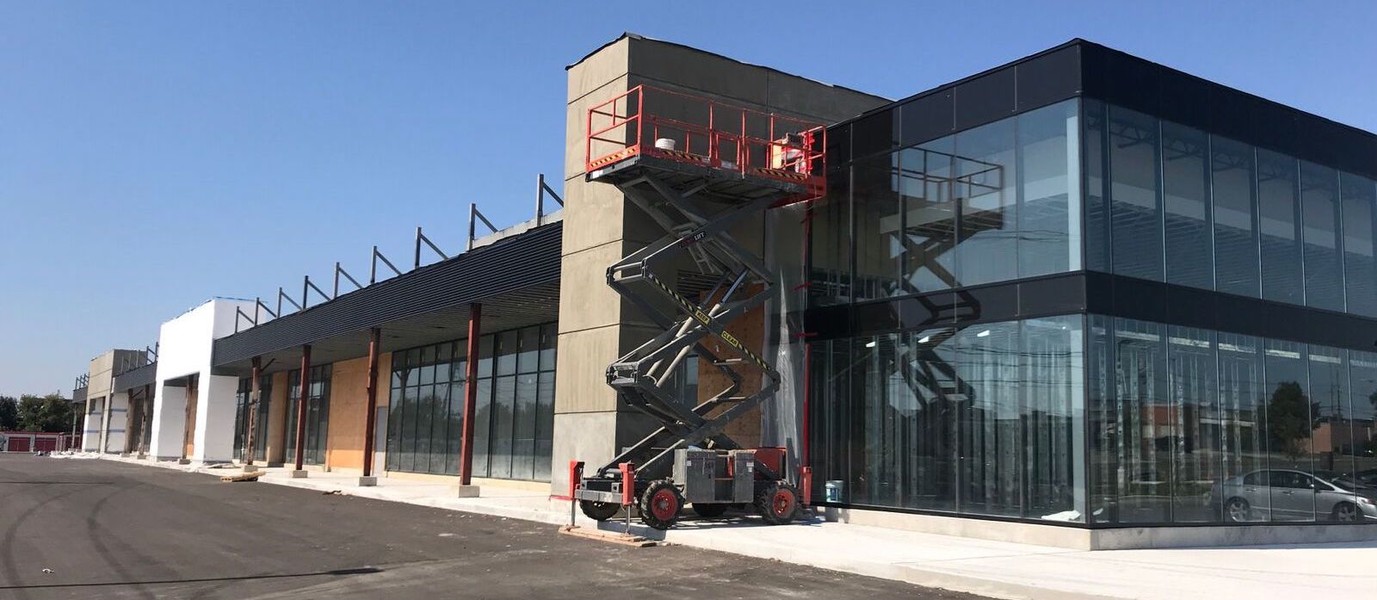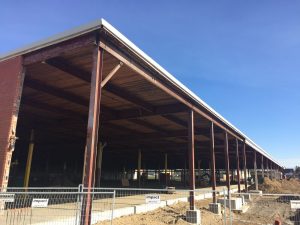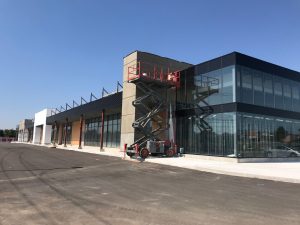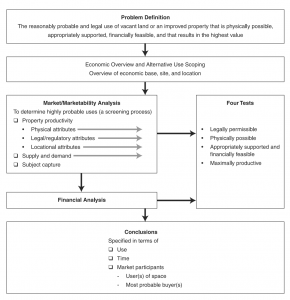
How to Determine The Highest and Best Use of Your Property
Quite often I am asked to assist with determining the value of an industrial building.
Knowing what a property is worth right now is crucial for anyone involved in real estate in any capacity. It can determine your exposure, allocation, profitability, and drive several decisions moving forward, and it is found using two main ‘vehicles’; a Broker’s Opinion of Value, and a Commercial Appraisal.
Now, a Broker’s Opinion of Value or Commercial Appraisal are generally required for the following scenarios:
- During the due diligence process for the acquisition or disposition of a property, mergers and acquisitions, and estate matters; and when
- Large real estate companies such as REITs conduct quarterly, semiannual or annual valuations of properties for investor reporting purposes and balance sheet updating;
Determining a property’s value is based on:
- asset attributes,
- net income, and
- current market conditions.
We need to collect information on:
- comparable sales,
- current offerings,
- occupancy,
- tenant composition,
- income and expenses,
- capitalization rates,
- property description, etc.
It is crucial to apply the right approach given the property type and characteristics as it relates to the current market conditions.
But first…..
A property must be appraised in terms of its highest and best use.
Why is that?
Well, I’ll reveal the reason shortly but first, let’s examine its definition.
The definition of highest and best use is as follows:
“The reasonable, probable and legal use of vacant land or an improved property, which is physically possible, appropriately supported, financially feasible, and that results in the highest value.”
While conducting the highest and best use study we need to consider not only the current use but any other alternate uses and property value that would be associated with such alternate uses. And in order to come up with one highest and best use, we need to conduct four tests of a site as vacant and as if improved.
The highest and best use of a property is based on an analysis that will identify the most profitable use to which the subject property can be put. It is determined by the market forces within the market where the property is located. Lastly, the market forces create market value, so understanding them is of crucial importance.
Case Study: Highest and Best Use (HABU) of an Existing Industrial Building
An industrial building in transition to warehouse retail operations.
Lot Size – 2 Acres
Building Size – 40,000 SF
When we analyzed the highest and best use of the property as improved we need to answer the following questions:
- Should the existing improvements on site be maintained in its current form?
- Should improvements be altered in a certain fashion to make them more valuable?
- Should improvements be demolished to create a vacant site for a different use?
Current Form – Industrial
40,000 SF x $7.00 PSF = $280,000 NOI
CAP Rate – 4.75%
Value = $5,895,000
Old Industrial Building under renovation
Change of Use – Retail Warehouse
40,000 SF x $12.50 PSF = $500,000 NOI
CAP Rate – 4.50%
Value = $11,100,000
Less Cost of Improvements – ($2,000,000)
Total Value = $9,100,000
Industrial Building under renovation/conversion to Retail Warehouse
Vacant Site
2 Acres x $2,000,000 Per Acre
Total Value – $4,000,000
In this particular case, it is obvious that the re-positioning of an industrial building to a retail warehouse would create the best value, therefore this is the HABU of the site. The cost of modifying the existing building and the value created in that modification is accounted for in the determination of the HABU.
Four Steps You Must Conduct in Positioning to HABU
While analyzing the reasonably probable uses of a site that could be undertaken, four steps are applied in the following order to develop adequate support for the HABU opinion.
In conducting these four steps we are determining:
- Legal Permissibility
- Physical Possibility
- Financial Feasibility
- Maximum Productivity
We must apply legal permissibility and physical possibility tests before we apply financial feasibility and maximum productivity since a site could be financially feasible but it has to be legally permitted first.
Legal Permissibility
We must consider uses that are permitted by current zoning, which uses could be permitted if a zoning change were granted and which are restricted by private restrictions on the site. Furthermore, restrictive covenants, title restrictions, height restrictions or long term leases may prohibit certain uses. We also must review other applicable regulations, building codes and environmental regulations.
Physical Possibility
The use of the site will be affected by physical characteristics such as shape, size, terrain, proximity to conservation areas, frontage and depth, ease of access, and visibility. Topography and subsoil conditions make certain sites undevelopable or expensive to develop.
Financial Feasibility
Once we met the first two criteria we can proceed with a financial feasibility study. For income-producing sites, we need to determine if a return is equal or greater than operating expenses, debt service and capital amortization of the investment. If the site is not income producing then our analysis has to confirm which use will create a profit greater then cost to develop and market the property.
Timing of the proposed new development is crucial so we need to determine when the improvements would be constructed as well as occupancy levels and Net Operating Income. In order to determine the financial feasibility of an income producing site we need to estimate hard and soft costs being construction cost, due diligence cost, development charges, application fees as well as the future gross potential income, vacancy levels and operating cost so that we can calculate NOI, as well as discount rates, and CAP rates.
Use of an improved site would be financially feasible if the net operating income generated is sufficient to satisfy the required market rate of return on such investment while financial feasibility of a non-income producing site is based on the accrued value benefits being greater than the cost involved in creating such value.
Once we have collected all the necessary information we will estimate Net Operating Income over a specific time horizon. Using Discounted Cash Flows, we can determine if the project will meet our investment objective. A project will be financially feasible if the Net Present Value of our future cash flows is greater than zero. The Internal Rate of Return (IRR) will also determine if a project will meet the minimally acceptable rate of return on such investment.
Maximum Productivity
A use cannot be considered a site’s HABU unless its anticipated earnings ability is sufficient to generate a reasonable return on costs of acquisition and development. This aspect of HABU inherently involves a cost-benefit analysis whereby the use that generates the highest profit or greatest return logically represents the HABU.
The Market Analysis Process and Four Tests
The Market Analysis Process. Credit – Stephen Fanning, Market Analysis for Real Estate
Conclusion:
And so, what is the reason to determine the Highest And Best Use?
It’s because it can unlock hidden value in your property.
Once it has been determined, we can then apply the appropriate approaches to value.
Now, implementing these different approaches is a large topic on its own, a conversation for another time and newsletter issue, which we will dive into in the coming weeks.
However, next week, we’ll take a look into how to analyze and understand the development potential of a property through dissecting a Development Options Report we worked on for one of our clients in a recent transaction.
Over the past 27 years, we have worked with numerous investors and occupiers of industrial properties to position their assets to the highest and best use; from old B-Class industrial to flex office, retail warehouses, self-storage facilities, or last-mile delivery centers.
This has resulted in sometimes doubling, or even tripling Net Operating Income (NOI), and therefore, property values.
To find out how we can help you achieve the same level of success, please give us a call.
Until next week….
Goran Brelih and his team have been servicing Investors and Occupiers of Industrial properties in Toronto Central and Toronto North markets for the past 25 years.
Goran Brelih is a Senior Vice President for Cushman & Wakefield ULC in the Greater Toronto Area.
Over the past 27 years, he has been involved in the lease or sale of approximately 25.7 million square feet of industrial space, valued in excess of $1.6 billion dollars while averaging between 40 and 50 transactions per year and achieving the highest level of sales, from the President’s Round Table to Top Ten in GTA and the National Top Ten.
Goran is currently serving as President of the SIOR ‐ Society of Industrial and Office Realtors, Central Canadian Chapter and on the Board of Directors of Muki Baum Accessibility Centre, a Toronto‐based NGO which provides support to children and adults with complex disabilities.
Specialties:
Industrial Real Estate Sales and Leasing, Investment Sales, Design Build and Land Development
About Cushman & Wakefield ULC.
Cushman & Wakefield is a leading global real estate services firm that delivers exceptional value by putting ideas into action for real estate occupiers and owners. Cushman & Wakefield is among the largest real estate services firms with 48,000 employees in approximately 400 offices and 70 countries.
In 2017, the firm had revenue of $6.9 billion across core services of property, facilities and project management, leasing, capital markets, advisory, and other services. To learn more, visit www.cushmanwakefield.com or follow @CushWake on Twitter.
For more information on GTA Industrial Real Estate Market or to discuss how they can assist you with your real estate needs please contact Goran at 416-756-5456, email at goran.brelih@cushwake.com, or visit www.goranbrelih.com.





